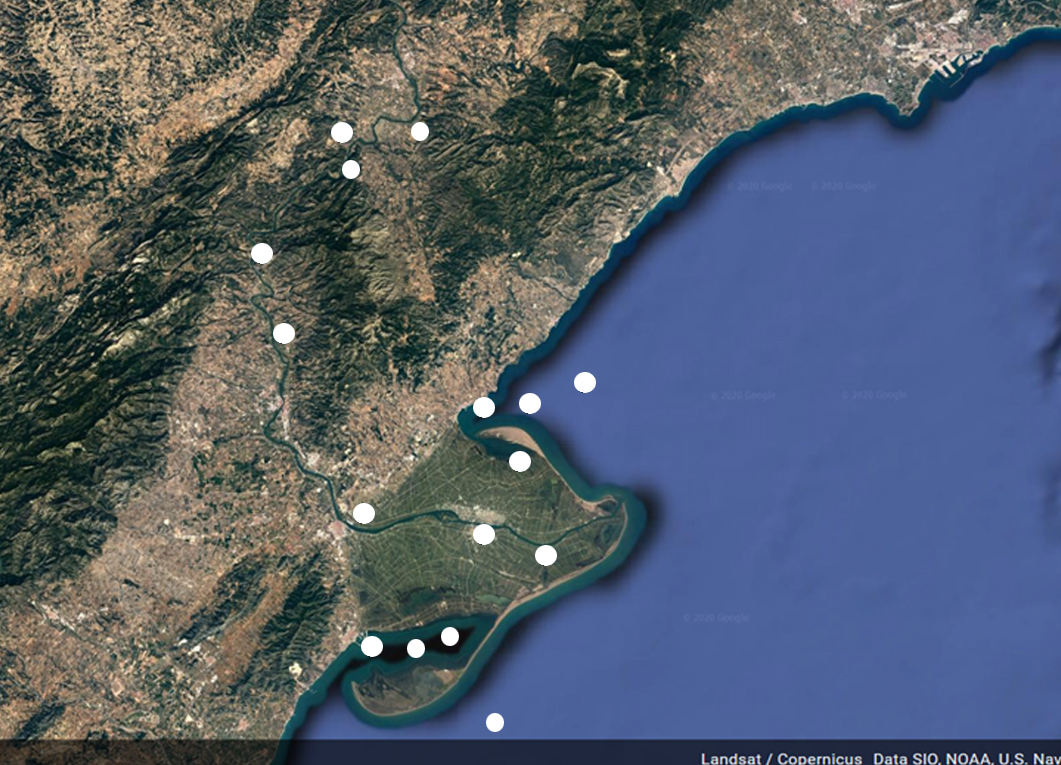A method to detect from a single sample nanoplastics and their composition in water
- Details
- Category: Laboratories
-
03 Nov 2020
Scientists at the IDAEA-CSIC have developed the first method that allows double screening to detect the presence of six polymers and 29 additives from a single sample. This cutting-edge methodology has been validated in the Ebro Delta, where they have analysed water samples from the river and from the sea. They are now working to apply this method to other environmental and human samples.

In-depth assessment of plastic particles and their effects on the environment requires methods that allow to detect not only the concentration of these particles but also their composition. Methods currently available have limitations, as they either only detect particles of a limited measurement range, or they detect the particles but not the composition.
Scientists at the laboratories of the Institut de Diagnòstic Ambiental i Estudis de l'Aigua (IDAEA-CSIC) work to develop methodologies for detecting in environmental samples very small plastic particles, sized from few microns to nanometres.
Adverse effects on environmental and human health
“We focus our work on these small particles because from an environmental point of view they cause very adverse effects: as they are colourful and similar in size to zooplankton and phytoplakton, fishes mistake them for food and they eat them”, says Marinella Farré, scientists at the IDAEA-CSIC. “And even if fishes cannot digest them, the particles are so small that once the fishes have eaten them, the particles can ‘move’ to different body organs, which has important consequences for human and environmental health”.
The problem is not only the particles but also the additives and pollutants and pathogens that particles can carry on. Additives are chemical compounds added to polymers in order to give them properties such as flexibility, more resistance to weathering or nonflammability (flame retardants of phthalates are examples of these substances). As these particles progressively break, their exposed surface gets wider and therefore it gets higher also the amount of substances lixiviated for the same quantity of plastic. On the other hand, plastic particles can carry pathogens and parasites attached to their surface, which can infect animals that eat them.
Scientists at the IDAEA have developed a methodology that enables the detection of micro and nanoparticles of polymers that can dilute in organic solvents (which are, as a matter of fact, most of the common plastics) as well as their additives.
It is composed by a first step of ultrafiltration and an assisted ultrasonic extraction, followed by liquid chromatography coupled to high resolution mass spectrometry. The methodology can detect very small concentrations of plastics and additives. In the first tests, the detection limits were very good, with a minimum detectable mass of 2 picograms. “This means a very high sensibility that makes the method useful for detecting plastic particles in environmental samples, as well as fabrics”, says Marinella Farré, principal investigator of the project who presented the work in the conference PLASTIC’2020.
Tested in the Ebro Delta
The method has been tested and validated in the Ebro Delta, in the frame of the project PLASMED. The selected areas are of interest due to the confluence of tourism, urban centres, aquaculture, agriculture and industry ... The double screening procedure allows the parallel detection of polymers and plastic additives. For example, in the Ebro delta area, six polymers and the presence of 29 additives have been detected and quantified. Samples were taken at 16 points: eight of them in the last stretch of the river and its mouth, and eight in the adjacent bays.
Most of the samples had polypropylene and polyethylene, which were found in concentrations up to 7000 nanograms per litre of water in some places. These are very high values, much higher than regulated organic pollutants, as scientists inform. Other polymers detected were polybutadiene, polyethylene terephthalate and, above all, polysiloxane, the latter present in all samples.
The most frequently found additives were valeric acid, benzotriazoles (used to protect plastic against ultraviolet degradation), and some phthalates, present in 67% of the samples. The researcher highlights that "Bisphenol-A was detected in only 22% of the samples, which reflects the limitation in its use".
In some areas little affected by urbanization, agriculture or industry, neither polymers nor additives were found in the samples.
This method may be of interest in the near future to assess the impact of plastic pollution on both the environment and human health. This is very cutting-edge research because there are hardly any data on the impact of smaller-sized plastic particles, although they may have the most adverse effects. Scientists are working to apply it to other environmental and human samples.
Website of the research group:
Water, Environmental and Food Chemistry (ENFOCHEM)




